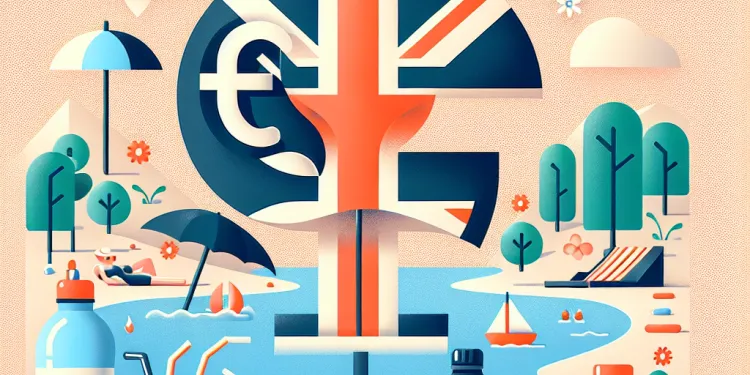
Find Help
More Items From Ergsy search
-

How can I prevent heatstroke during a heatwave?
Relevance: 100%
-
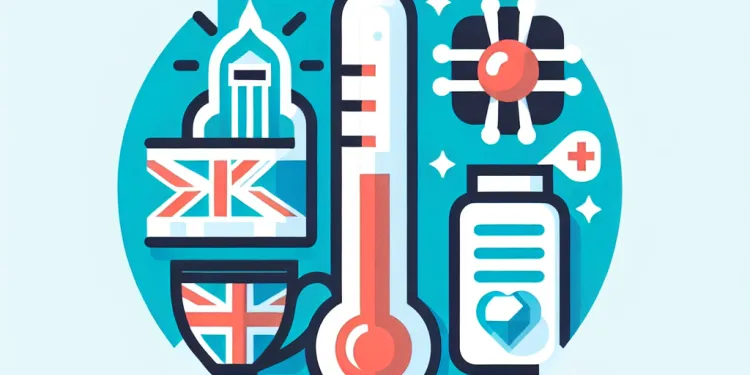
What should I do if someone is suffering from heatstroke?
Relevance: 66%
-

What should I do during a heatwave?
Relevance: 62%
-
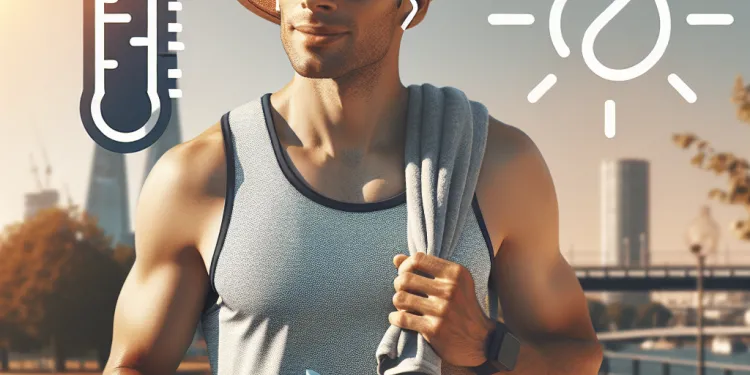
Is it safe to exercise outside during a heatwave?
Relevance: 60%
-

How can I ensure pets are safe during a heatwave?
Relevance: 57%
-
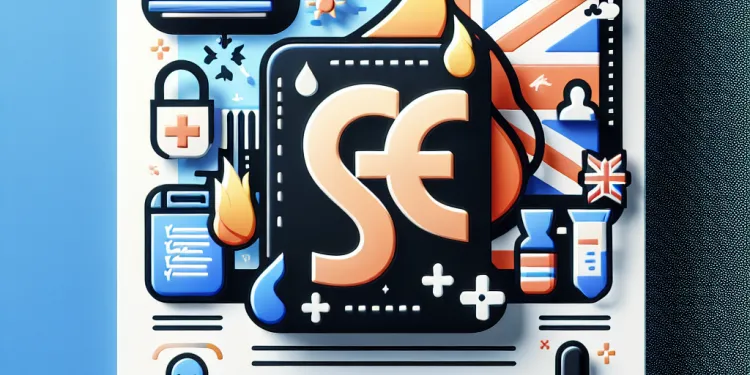
How can I prevent heat-related illnesses?
Relevance: 56%
-
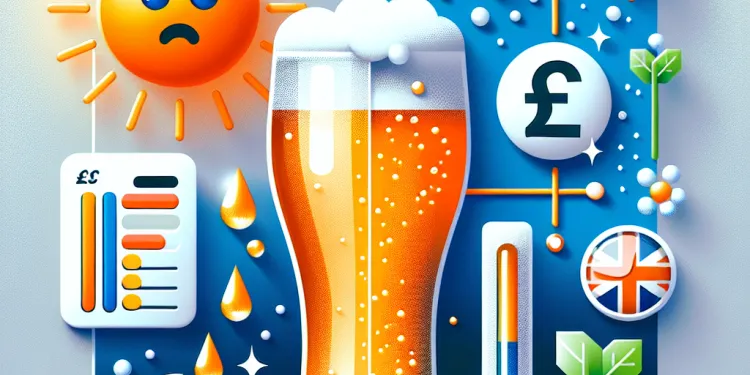
Should I avoid alcohol during a heatwave?
Relevance: 52%
-
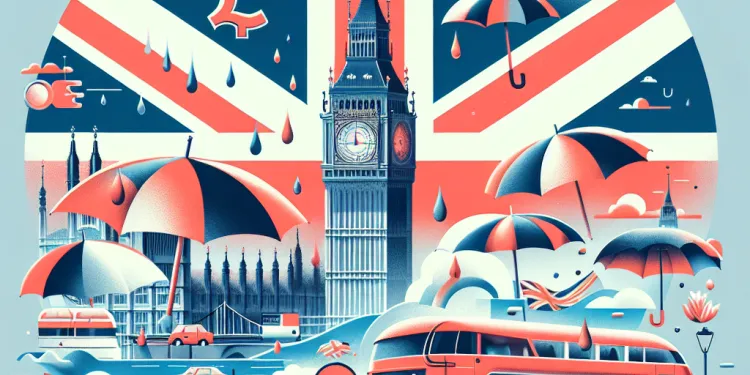
What are the long-term effects of repeated heatwave exposure?
Relevance: 51%
-

How can I keep children safe during a heatwave?
Relevance: 50%
-
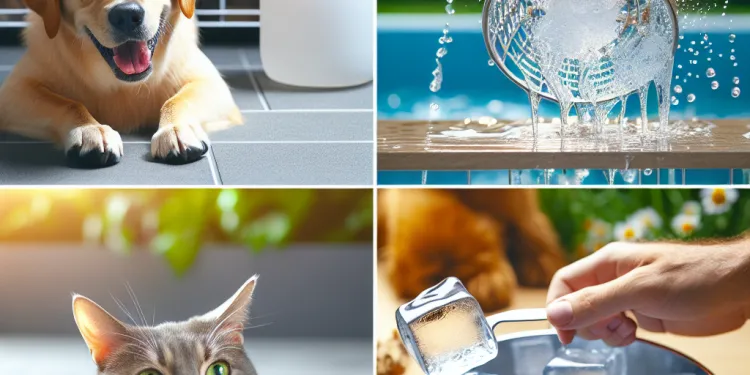
Are there any special precautions for pets during a heatwave?
Relevance: 50%
-
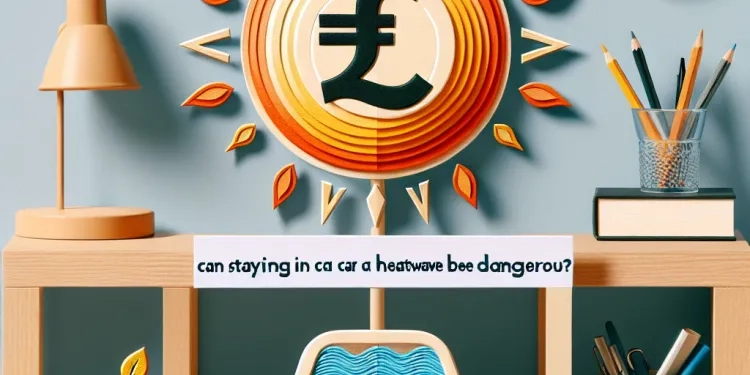
Can staying in a car during a heatwave be dangerous?
Relevance: 49%
-
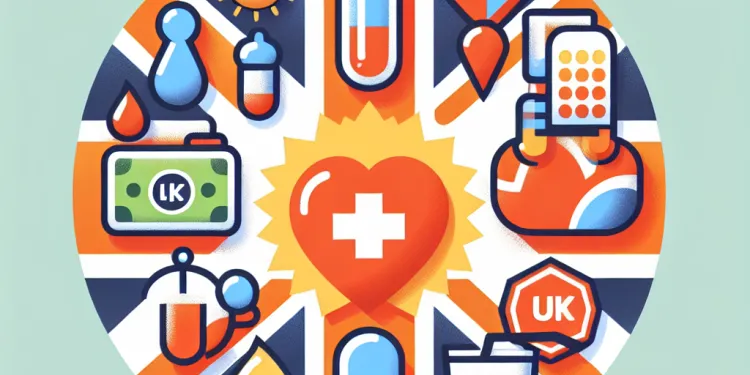
Should I take any special precautions if I have a medical condition during a heatwave?
Relevance: 48%
-
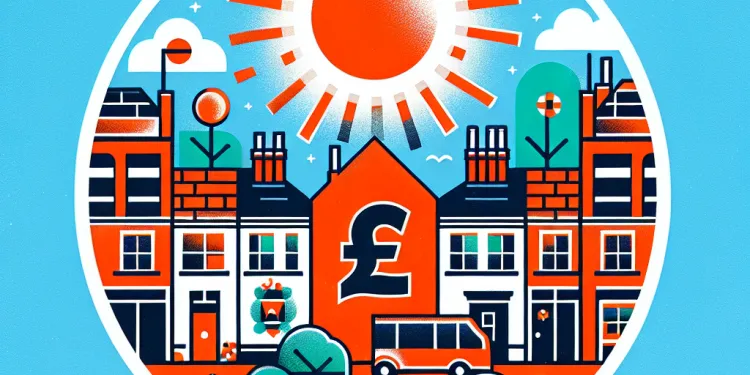
Is it necessary to check on neighbors during a heatwave?
Relevance: 45%
-
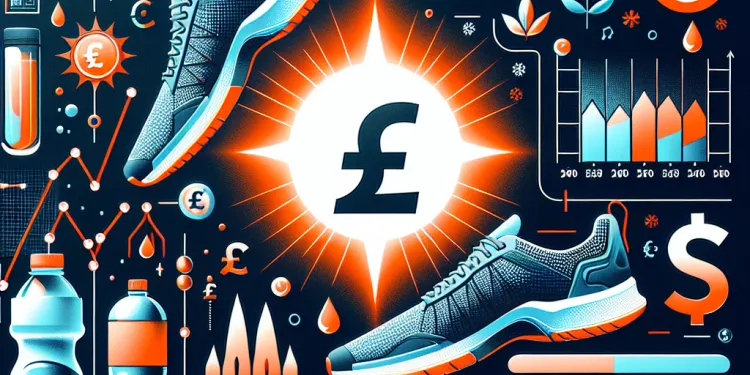
Should I adjust my exercise routine during a heatwave?
Relevance: 45%
-
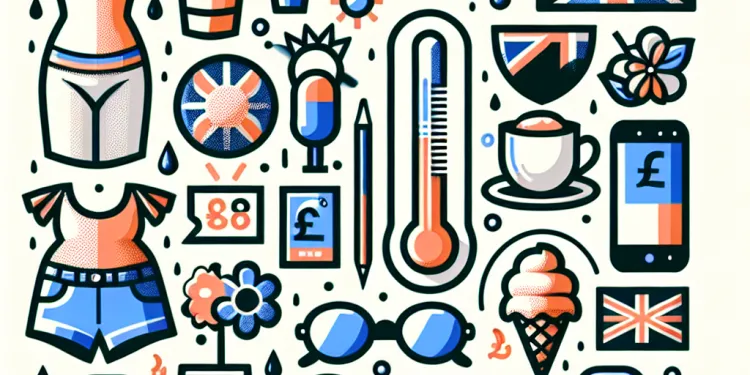
What should I wear during a heatwave?
Relevance: 43%
-
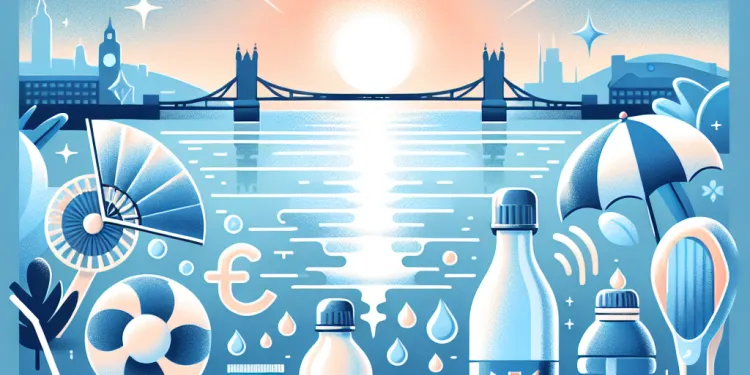
What activities should I avoid during a heatwave?
Relevance: 42%
-
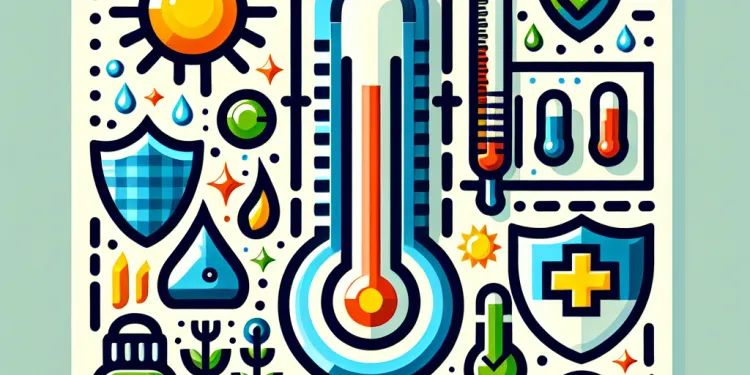
Is it safe to take cold showers during a heatwave?
Relevance: 42%
-

How can I keep my plants alive during a heatwave?
Relevance: 41%
-
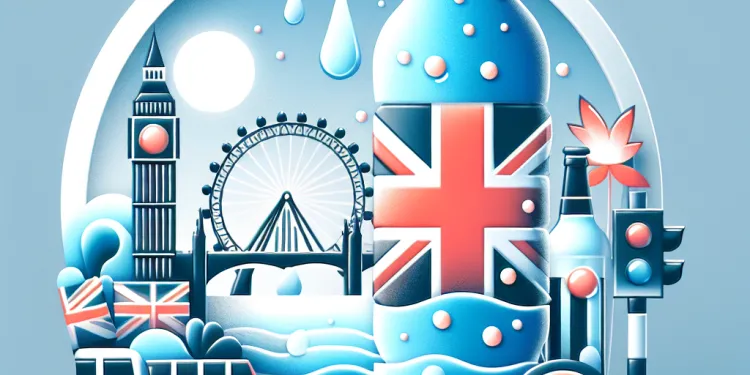
How much water should I drink during a heatwave?
Relevance: 41%
-

What apps or services can help me monitor the weather during a heatwave?
Relevance: 40%
-

What foods are best to eat during a heatwave?
Relevance: 37%
-

How to stay cool during a heatwave
Relevance: 37%
-
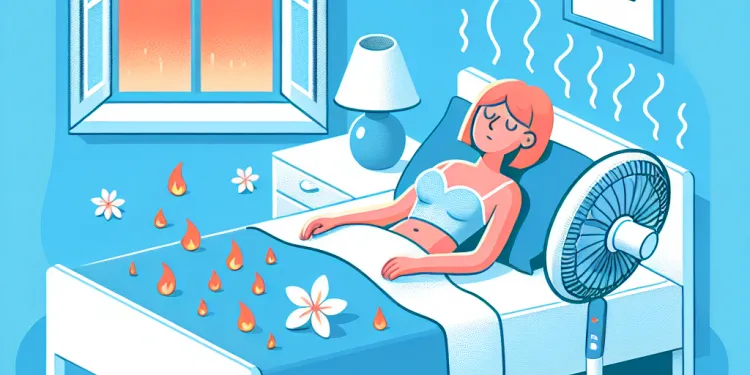
How can I sleep comfortably during a heatwave?
Relevance: 36%
-
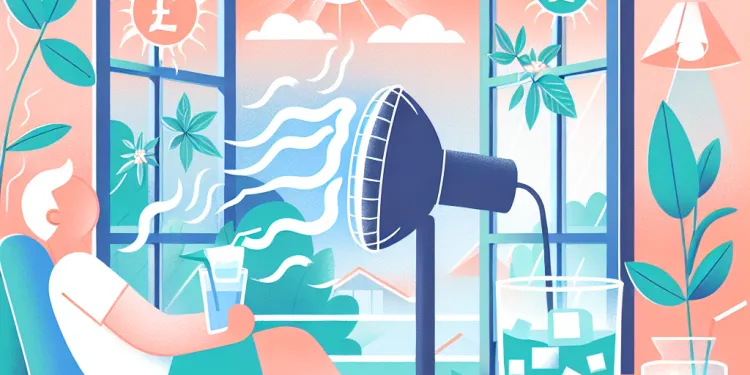
How can I stay cool indoors during a heatwave?
Relevance: 33%
-

How can I keep my kids cool during a heatwave?
Relevance: 33%
-
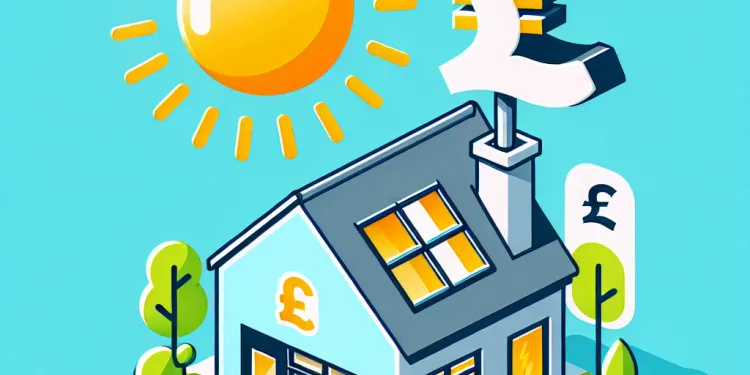
How can I shade my house to keep it cool during a heatwave?
Relevance: 27%
-
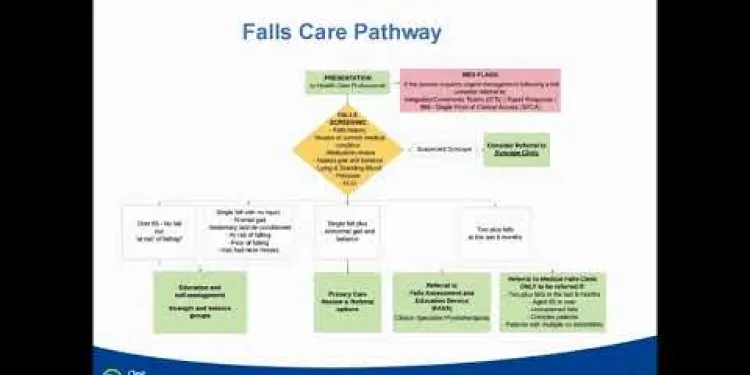
Falls Prevention Podcast
Relevance: 21%
-

Can CFS be prevented?
Relevance: 21%
-

Can meningitis be prevented?
Relevance: 21%
-

Can gonorrhoea be prevented?
Relevance: 21%
-
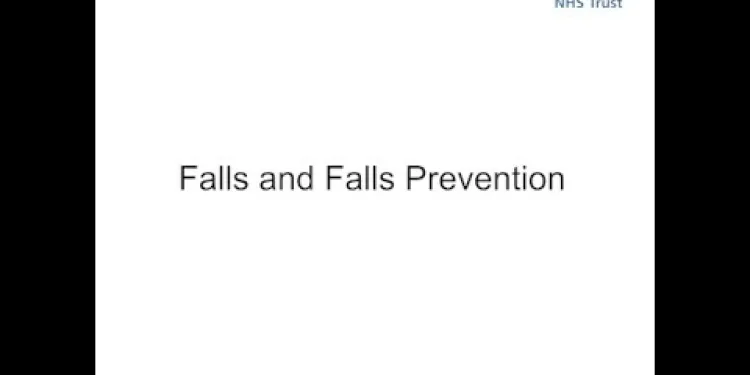
Falls and Falls Prevention
Relevance: 21%
-

Can chickenpox be prevented?
Relevance: 21%
-

Can Rubella be prevented?
Relevance: 21%
-
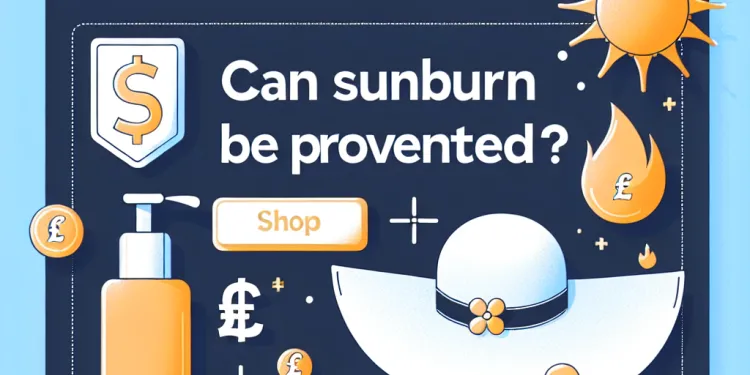
Can sunburn be prevented?
Relevance: 21%
-

Can shingles be prevented?
Relevance: 21%
-

Is postnatal depression preventable?
Relevance: 21%
-

Can shingles be prevented?
Relevance: 21%
-
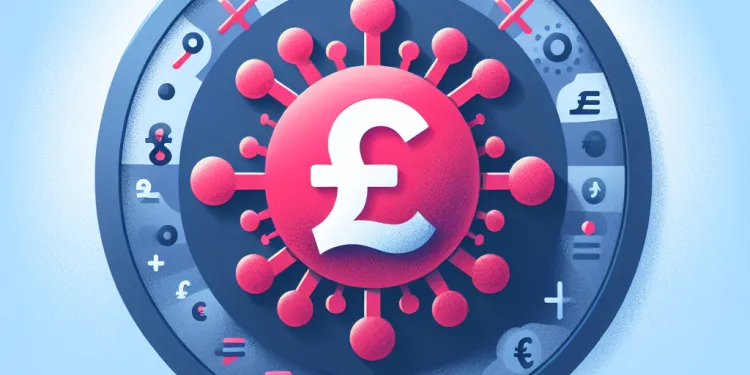
How can HPV be prevented?
Relevance: 20%
-
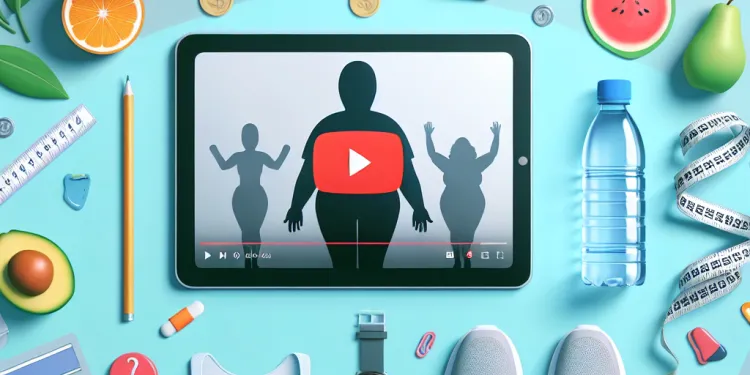
How can obesity be prevented?
Relevance: 20%
-

How can HIV be prevented?
Relevance: 20%
Understanding Heatstroke
Heatstroke is a severe heat-related illness that occurs when the body overheats, usually as a result of prolonged exposure to or physical exertion in high temperatures. It can be life-threatening if not treated promptly. During a heatwave, the risk of heatstroke increases significantly, making prevention crucial, especially in the UK, where people might not be accustomed to extreme temperatures.
Staying Hydrated
Proper hydration is key to preventing heatstroke. Drink plenty of water throughout the day, even if you do not feel thirsty. Avoid alcohol, caffeine, and sugary drinks, as these can accelerate dehydration. Consider consuming drinks that replace electrolytes to help maintain your body's salt and mineral balance, which can be disrupted during intense heat.
Keeping Cool Indoors
During a heatwave, staying inside during the hottest parts of the day, usually between 11 am and 3 pm, can significantly reduce your risk of heatstroke. Use fans or air conditioning to keep your living space cool. Closing curtains or blinds can block out direct sunlight and help maintain a lower indoor temperature. If you do not have air conditioning, try spending time in air-conditioned public places like shopping centers or libraries.
Clothing and Protection
Wear light, loose-fitting, and light-colored clothing to reflect heat and sunlight. A wide-brimmed hat provides shade and helps protect your face from sun radiation. Applying sunscreen with high protection factor (SPF) is also essential to protect your skin from harmful UV rays that can increase body temperature.
Adjustment of Activities
Avoid strenuous activities and exercise during peak heat hours. If you need to engage in outdoor activities, try to schedule them for early mornings or evenings when temperatures are lower. Take frequent breaks in shaded or cool areas and use these opportunities to hydrate adequately.
Monitoring Weather Conditions
Stay informed about weather conditions by following local forecasts and heat alerts. Awareness of heatwave warnings can help you prepare and take necessary precautions to minimize exposure to extreme heat. Make plans accordingly to ensure you and your family remain safe during these periods.
Checking on Vulnerable Individuals
Elderly people, young children, and those with preexisting health conditions are more susceptible to heatstroke. Regularly check on friends, family, and neighbors who may be at higher risk. Ensure they have access to cool environments and are well-hydrated. Offering assistance, such as running errands for them, can also be beneficial.
Conclusion
Preventing heatstroke during a heatwave requires a combination of staying hydrated, keeping cool, wearing appropriate clothing, adjusting activities, being informed about the weather, and caring for vulnerable individuals. Taking these proactive steps can help ensure your safety and well-being during periods of extreme heat.
Understanding Heatstroke
Heatstroke happens when your body gets too hot. This can happen during hot weather when you stay outside too long or exercise a lot. It is very dangerous and needs quick treatment. It is important to be careful during very hot days, especially in places like the UK, where people are not used to the heat.
Staying Hydrated
Drinking water is very important to stop heatstroke. Drink lots of water all day, even if you are not thirsty. Do not drink alcohol, tea, coffee, or fizzy drinks because they can make you lose water. You can try drinks with salts and minerals to help your body stay balanced.
Keeping Cool Indoors
When it is very hot outside, stay indoors during the hottest time, usually from 11 am to 3 pm. Use a fan or air conditioning to keep your home cool. Close curtains to keep the sun out. If you do not have air conditioning at home, go to cool places like shopping centers or libraries.
Clothing and Protection
Wear clothes that are light and loose. Choose colors that are light to keep cool. Wear a hat with a wide brim to protect your face from the sun. Use sunscreen to protect your skin from the sun’s strong rays.
Adjustment of Activities
Do not do hard exercise or activities when it is very hot. If you need to do things outside, try doing them in the morning or evening when it is cooler. Take lots of breaks in the shade and drink plenty of water.
Monitoring Weather Conditions
Check the weather reports for your area. Pay attention to any heat warnings. Knowing about the weather will help you be ready and stay safe during very hot times. Plan your day according to the weather to keep yourself safe.
Checking on Vulnerable Individuals
Old people, young kids, and those who are already sick can get heatstroke more easily. Check on these people to make sure they are okay. Ensure they are staying cool and drinking water. Help them by doing some tasks for them if needed.
Conclusion
To stop heatstroke, drink water, keep cool, wear the right clothes, change your activities, know the weather, and help others who might be more at risk. Doing these things will help keep you safe and healthy during hot weather.
Frequently Asked Questions
What is heatstroke?
Heatstroke is a severe heat illness that occurs when the body can no longer regulate its temperature, resulting in a rapid increase.
How can I recognize the symptoms of heatstroke?
Symptoms include high body temperature, altered mental state, nausea, rapid breathing, and flushed skin.
What should I drink to stay hydrated during a heatwave?
Drink plenty of water, and avoid alcohol and caffeine. Electrolyte-rich beverages can also be beneficial.
How often should I drink water to prevent heatstroke?
Drink water regularly, even if you don't feel thirsty. Aim for at least 8 ounces every hour if outdoors.
Can certain clothing help prevent heatstroke?
Yes, wear lightweight, loose-fitting, and light-colored clothing to help stay cool.
Is it safe to exercise during a heatwave?
Strenuous activities should be limited during peak heat hours. Exercise during cooler parts of the day.
How can I keep my home cool during a heatwave?
Use fans, air conditioning, and close blinds or curtains during the hottest part of the day.
Should I avoid the sun altogether during a heatwave?
Avoid direct sun exposure during peak hours (10 AM to 4 PM) and seek shade when outdoors.
What are the best places to go if I need to cool down?
Go to air-conditioned places like malls, libraries, or community centers.
How can I keep children safe from heatstroke?
Ensure they stay hydrated, limit outdoor play during the hottest hours, and dress them in cool clothing.
What should I do if I think I'm experiencing heatstroke?
Seek medical help immediately. Move to a cooler place, drink water, and cool down with water or ice packs.
Can fans alone prevent heatstroke?
Fans can help circulate air but might not be enough during extreme heat. Combine with other cooling methods.
Are certain populations more at risk for heatstroke?
Yes, older adults, children, and people with chronic illnesses are more vulnerable.
Can medication increase the risk of heatstroke?
Some medications can affect the body's ability to regulate temperature. Consult your doctor for advice.
Can a cool shower help prevent heatstroke?
Yes, taking a cool shower or bath can help lower your body temperature.
How can pets be protected from heatstroke?
Ensure they have plenty of water, avoid hot surfaces, and never leave them in parked vehicles.
Is it dangerous to stay in a car during a heatwave?
Yes, temperatures can rise rapidly in parked cars. Never leave children or pets unattended in vehicles.
How does humidity impact the risk of heatstroke?
High humidity can make it harder for sweat to evaporate, reducing the body's ability to cool down.
What role does diet play in preventing heatstroke?
Eat light, cool meals. Avoid heavy, hot foods that can increase body temperature.
Can swimming help prevent heatstroke?
Swimming can help cool you down, but be cautious of sun exposure and stay hydrated.
What is heatstroke?
Heatstroke is when your body gets too hot. It can make you feel sick.
Here is what to look for:
- You may feel very hot and not be sweating.
- Your skin might feel dry and not wet.
- You could feel dizzy or have a headache.
- You might feel confused or tired.
If you think someone has heatstroke, it is important to cool them down fast.
You can try:
- Moving them to a cool place.
- Giving them cool water to drink.
- Putting a wet cloth on their skin.
Ask a grown-up for help or call for a doctor if needed.
Heatstroke is when you get too hot and your body cannot cool down. This makes your body heat up very fast.
How can I tell if someone has heatstroke?
Look for these signs:
- Feeling very hot
- Red, hot skin
- Feeling confused or dizzy
- Feeling sick
- Fast heartbeat
- No sweat
If you see these signs, try to cool the person down. Get help from an adult or call for help. You can also use pictures or a simple app to learn more.
If you have these signs, you might be sick:
- A high body temperature (fever).
- Feeling confused or not thinking straight.
- Feeling sick in your tummy (nausea).
- Breathing very fast.
- Your skin looks red or feels hot.
If you feel this way, tell an adult or ask to see a doctor. It can help to use simple tools like a thermometer to check your temperature. You can also use breathing exercises to calm down if you're breathing too fast.
What can I drink to stay healthy in hot weather?
When it is very hot, it is important to drink enough. Here are some tips:
- Water: Drink lots of water. It's the best drink to keep you healthy.
- Juice: Try to have fresh juice. It's tasty and gives you energy.
- Avoid sugary drinks: Drinks like soda can make you more thirsty.
Remember to drink often, even if you’re not thirsty, to stay safe in the heat.
You can use a refillable water bottle to help you remember to drink.
Drink lots of water. Try not to drink things like alcohol and coffee. Drinks with electrolytes, like sports drinks, can also help.
How much water should I drink to stay safe in the heat?
Drink water often, especially when it's hot outside. Try to drink a little bit every 30 minutes.
If you are playing or working hard, drink more often.
Use apps or timers to remind you to drink water.
Drink water often, even if you don't feel like you need it. Try to drink at least one small cup of water every hour when you are outside.
Can wearing certain clothes stop you from getting too hot?
Yes, wear clothes that are light, loose, and in light colors to help you stay cool.
Is it OK to exercise when it's really hot outside?
When it's very hot, it's important to be careful if you exercise.
Make sure to:
- Drink lots of water.
- Rest often and take breaks.
- Wear light clothes.
- Exercise early in the morning or late in the evening when it's cooler.
- Be aware of how your body feels. If you feel too hot or dizzy, stop and rest.
Talk to someone you trust, like a family member or a coach, if you're not sure what to do.
Do not do hard exercise when it is hot outside. Exercise when it is cooler.
How can I keep my home cool when it's very hot?
Here are some easy ways to keep your home cool when it's really hot outside:
- Use fans to make the air move around.
- Keep curtains or blinds closed to block the sun.
- Try to stay in the coolest room in your home.
- Drink lots of water to stay cool.
- Turn off lights and electronics you don’t need, as they can make rooms warmer.
Tools that might help:
- Use a fan or a cool cloth on your skin.
- Take a cool shower if you're feeling too hot.
Use fans and air conditioning to keep cool. Close the blinds or curtains when it is very hot outside.
Should I stay away from the sun when it is very hot?
When it is very hot outside, it is a good idea to be careful with the sun. Here are some tips:
- Stay inside when the sun is strongest. This is usually between 11 am and 3 pm.
- Wear a hat and sunglasses when you go outside.
- Put on sunscreen to protect your skin.
- Drink plenty of water to stay hydrated.
It is important to stay cool and safe during hot weather. The sun can be dangerous if you are out too long without protection.
Stay out of the sun between 10 in the morning and 4 in the afternoon. This is when the sun is strongest. Find some shade if you go outside during this time.
Where can I go to cool down?
Go to cool places with air conditioning. This could be a mall, a library, or a community center.
How can I keep children safe from getting too hot?
Here are some ways to protect children from heat:
- Make sure they drink water often.
- Dress them in light, cool clothes.
- Keep them in the shade or inside when it is very hot.
- Never leave them alone in a car.
- Use fans or air conditioning if you have them.
It can help to use pictures or videos to show how to stay safe. You can also use a timer to remind them to drink water.
Make sure they drink lots of water. Don't let them play outside when it's really hot. Dress them in cool clothes.
What can I do if I feel too hot and sick?
Get help from a doctor right away. Go to a cool place, drink some water, and use water or ice packs to cool off.
Can fans stop heatstroke?
Fans help move air around the room. But when it's really hot, fans might not be enough. Try other ways to keep cool too.
Who is more likely to get heatstroke?
Some people might get heatstroke easier than others.
Here are some who are at more risk:
- Babies and young children: Their bodies get hot faster.
- Older people: They may not feel the heat as much.
- People who are sick: Some illnesses make it harder to stay cool.
- Athletes and outdoor workers: Being active outside can make them hot.
Here are ways to stay safe:
- Drink lots of water.
- Take breaks in the shade.
- Wear a hat and light clothes.
- Know what to do if you feel too hot.
Yes, older people, kids, and people who are sick often can get hurt more easily.
Can medicine make you more likely to get heatstroke?
Some medicine can make it easier to get heatstroke. Here is how to stay safe:
- Drink lots of water.
- Stay in the shade when it’s hot.
- Wear a hat and light clothes to keep cool.
- Ask a doctor if your medicine can cause heat problems.
If you feel too hot, find a cool place and rest.
Some medicines can make it hard for your body to keep the right temperature. Talk to your doctor for help.
Can a cool shower stop heatstroke?
Yes, a cool shower or bath can help you feel cooler.
How can we keep pets safe from too much heat?
Pets can get sick if they are too hot. Here are some tips to keep them safe:
- Keep pets inside or in the shade when it’s hot outside.
- Make sure they have lots of water to drink.
- Do not leave pets in a car on a hot day.
- Take them for walks when it is cooler, like in the morning or evening.
- Watch for signs they are too hot, like heavy breathing or drooling.
If your pet looks sick from the heat, help them cool down and call the vet.
Ask someone for help if you need it, or use picture charts to remember these tips.
Make sure they have lots of water. Keep them away from hot places, and never leave them alone in parked cars.
Is it safe to sit in a car when it's very hot outside?
If it is very hot outside, it can get even hotter inside a car. This can be unsafe.
Here is what you can do to be safe:
- Try to stay out of the car if it is very hot.
- If you have to be in the car, open the windows or turn on the air conditioner to cool down.
- Drink lots of water so you don’t get too hot.
- If you feel sick or dizzy, get out of the car and find a cool place.
Ask a friend or an adult for help if you think it is too hot.
Parked cars can get hot very quickly. Never leave kids or pets alone in cars.
How does humidity affect getting heatstroke?
Humidity means how much water is in the air. When it's very humid, the air feels wet and sticky. This can make it harder for your body to cool down.
Heatstroke happens when your body gets too hot and can't cool down. You might feel dizzy or sick.
When it's hot and humid, you can get heatstroke more easily. This is because sweat doesn't dry on your skin to cool you down.
Here are some things you can do to stay safe:
- Drink lots of water.
- Stay in the shade or go inside where it's cooler.
- Wear a hat and light clothes.
If you feel too hot, tell an adult and rest in a cool place.
When the air is very wet, it is harder for sweat to dry. This makes it harder for our body to cool off.
How can what we eat help stop heatstroke?
Eating the right foods and drinking lots of water can help keep your body cool and safe. When it's hot outside, make sure to drink plenty of water. Eating fruits and vegetables can also help, because they have water in them. Avoid too many salty snacks, as they can make you thirsty. By choosing the right foods and drinks, you can stay cool and healthy in the heat.
Tools that can help you: Try using a notebook to track your water and food each day.
Eat meals that are light and cool. Stay away from heavy and hot foods because they can make your body feel hotter.
Can swimming stop you from getting too hot?
Swimming can be a good way to cool down when it is very hot. It helps your body stay cool. Staying cool can stop you from getting heatstroke.
Heatstroke happens when your body gets too hot. It can make you feel very sick. To stay safe, swim in cool water and drink plenty of water.
Tools to help you:
- Wear a hat and sunglasses when you are not swimming.
- Take breaks in the shade.
If you feel dizzy or too hot, tell an adult right away.
Swimming is a good way to cool off. Be careful in the sun and remember to drink water.
Useful Links
- Ergsy carfully checks the information in the videos we provide here.
- Videos shown by Youtube after a video has completed, have NOT been reviewed by ERGSY.
- To view, click the arrow in centre of video.
- Most of the videos you find here will have subtitles and/or closed captions available.
- You may need to turn these on, and choose your preferred language.
- Go to the video you'd like to watch.
- If closed captions (CC) are available, settings will be visible on the bottom right of the video player.
- To turn on Captions, click settings .
- To turn off Captions, click settings again.
More Items From Ergsy search
-

How can I prevent heatstroke during a heatwave?
Relevance: 100%
-

What should I do if someone is suffering from heatstroke?
Relevance: 66%
-

What should I do during a heatwave?
Relevance: 62%
-

Is it safe to exercise outside during a heatwave?
Relevance: 60%
-

How can I ensure pets are safe during a heatwave?
Relevance: 57%
-

How can I prevent heat-related illnesses?
Relevance: 56%
-

Should I avoid alcohol during a heatwave?
Relevance: 52%
-

What are the long-term effects of repeated heatwave exposure?
Relevance: 51%
-

How can I keep children safe during a heatwave?
Relevance: 50%
-

Are there any special precautions for pets during a heatwave?
Relevance: 50%
-

Can staying in a car during a heatwave be dangerous?
Relevance: 49%
-

Should I take any special precautions if I have a medical condition during a heatwave?
Relevance: 48%
-

Is it necessary to check on neighbors during a heatwave?
Relevance: 45%
-

Should I adjust my exercise routine during a heatwave?
Relevance: 45%
-

What should I wear during a heatwave?
Relevance: 43%
-

What activities should I avoid during a heatwave?
Relevance: 42%
-

Is it safe to take cold showers during a heatwave?
Relevance: 42%
-

How can I keep my plants alive during a heatwave?
Relevance: 41%
-

How much water should I drink during a heatwave?
Relevance: 41%
-

What apps or services can help me monitor the weather during a heatwave?
Relevance: 40%
-

What foods are best to eat during a heatwave?
Relevance: 37%
-

How to stay cool during a heatwave
Relevance: 37%
-

How can I sleep comfortably during a heatwave?
Relevance: 36%
-

How can I stay cool indoors during a heatwave?
Relevance: 33%
-

How can I keep my kids cool during a heatwave?
Relevance: 33%
-

How can I shade my house to keep it cool during a heatwave?
Relevance: 27%
-

Falls Prevention Podcast
Relevance: 21%
-

Can CFS be prevented?
Relevance: 21%
-

Can meningitis be prevented?
Relevance: 21%
-

Can gonorrhoea be prevented?
Relevance: 21%
-

Falls and Falls Prevention
Relevance: 21%
-

Can chickenpox be prevented?
Relevance: 21%
-

Can Rubella be prevented?
Relevance: 21%
-

Can sunburn be prevented?
Relevance: 21%
-

Can shingles be prevented?
Relevance: 21%
-

Is postnatal depression preventable?
Relevance: 21%
-

Can shingles be prevented?
Relevance: 21%
-

How can HPV be prevented?
Relevance: 20%
-

How can obesity be prevented?
Relevance: 20%
-

How can HIV be prevented?
Relevance: 20%